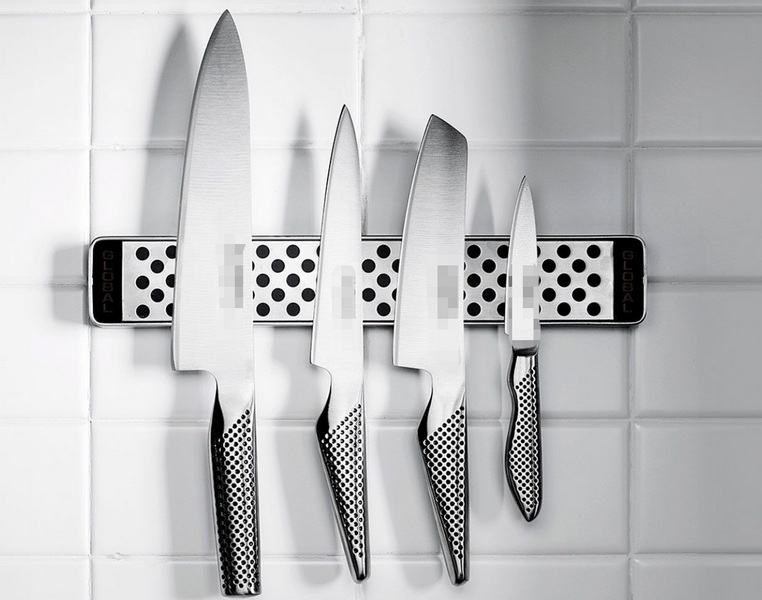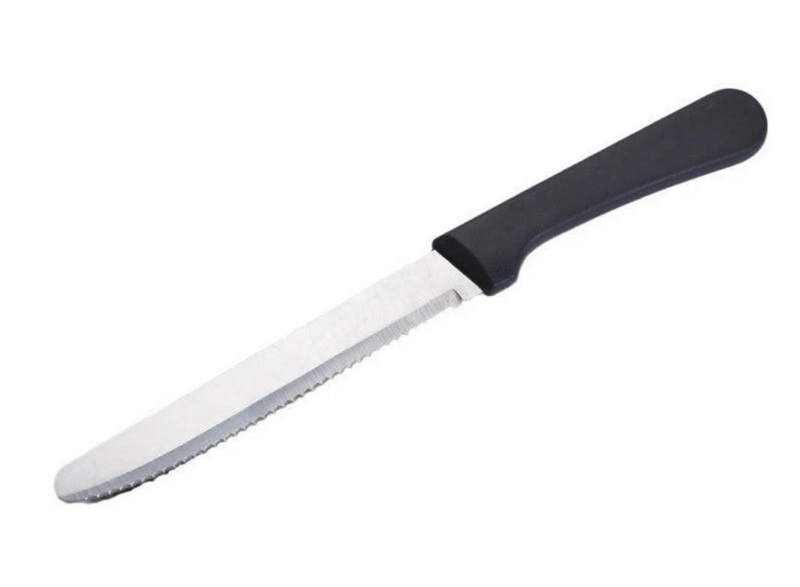- All
- Product Name
- Product Keyword
- Product Model
- Product Summary
- Product Description
- Multi Field Search
Views: 222 Author: Ann Publish Time: 2025-11-02 Origin: Site











Content Menu
● Understanding Dishwasher Safety in Steak Knives
● Material Choices and Design Trade-offs
● Manufacturing and Quality Assurance for OEM Partners
● Care and Maintenance Guidance for End Users
● Case Studies and Market Positioning
● FAQ
>> Are all Steak Knives dishwasher safe by default?
>> Will dishwasher use cause dulling?
>> Do dishwasher-safe Steak Knives require special care after washing?
>> Can these knives be sharpened easily after dishwasher use?
>> How should OEM shipments be packaged to communicate dishwasher safety?
In today's professional kitchen supply ecosystem, OEM manufacturers and overseas brand partners seek tools that balance performance with practical maintenance. For a global audience, a dishwasher-safe Steak Knife is not merely a marketing term; it represents a carefully engineered combination of blade material, handle construction, and assembly integrity designed to endure repeated washing cycles without compromising safety, edge retention, or aesthetics. This article provides a comprehensive overview of the key factors that define dishwasher-safe Steak Knives, the trade-offs involved in different design choices, and actionable guidance to help you communicate precise value to retailers, distributors, and end users. Throughout, the emphasis remains on how to deliver reliable cutting performance under routine dishwasher use while preserving product warranties and brand reputation.

Dishwasher safety for Steak Knives means that the blade, handle, and junctions can withstand automated cleaning environments, detergents, and thermal cycles without rusting, delaminating, warping, or edge degradation beyond an acceptable threshold. Core attributes include corrosion resistance, mechanical stability, and a robust bond between blade and handle. For OEMs, clearly defined performance criteria—such as resistance to standard dishwasher detergents, heat exposure, and abrasive contact with other utensils—serve as the foundation for reliable product development and consistent QA outcomes. In practice, a truly dishwasher-safe Steak Knife should perform consistently across multiple cycles, maintaining sharpness and structural integrity while delivering safe handling in domestic and professional dishwashing contexts.
- Blade alloys: Stainless steels with proven dishwasher performance are the backbone of many dishwasher-safe Steak Knives. Elements such as chromium, vanadium, and molybdenum contribute corrosion resistance and edge stability. However, selecting a steel with higher corrosion resistance may impact ease of sharpening and overall cost. In some cases, a coated blade (ceramic-like or polymer-based coatings) can offer additional protection but may influence long-term edge retention and refinishing needs.
- Handle systems: Handle options range from high-impact plastics and fiberglass-reinforced nylon to full-tang metal constructs with riveted scales. The objective is to avoid loosening, cracking, or moisture ingress after repeated heat and chemical exposure. Full-tang designs with reliable rivets or mechanical fasteners tend to perform better in dishwasher environments, while smoother synthetic handles can simplify cleaning but require precise bonding and sealing to prevent water intrusion.
- Bonding and assembly: A secure blade-to-handle connection is essential. Common methods include riveted joints, hidden fasteners, and continuous tang designs. For manufacturers, specifying robust tolerances and quality checks for rivet tightness, tang integrity, and joint seams reduces the risk of loosening during cycles.
- Edge geometry: Serrated edges generally handle dishwasher-induced micro-abrasion better over many cycles, preserving slicing efficiency when exposed to routine washing. Plain edges may require more regular maintenance if dishwasher conditions are aggressive, but they can be re-sharpened more predictably with standard tools. The choice depends on market expectations and maintenance routines.
- Finishes and coatings: If using protective coatings, compatibility with dishwasher chemistry and heat is critical. Coatings should resist peeling or corrosion under typical cycle times and temperatures, and should be supported by a clear warranty and care guidance for end users.
- Raw material qualification: Ensure blade steel batch traceability, chemical composition verification, and performance benchmarks such as hardness and impact resistance. This supports consistent dishwasher performance across production lots.
- Assembly controls: Establish rigorous checks for blade-to-handle fit, rivet integrity, and tang-fullness. Documented assembly processes help maintain uniformity in end products and minimize field failures.
- Surface treatment: Polishing, deburring, and coating application must be controlled to prevent rough edges or micro-scratches that could trap residues and undermine cleaning efficiency. Uniform finishing supports predictable dishwasher behavior.
- Accelerated cycle testing: Simulate typical household and commercial dishwasher cycles (detergent types, temperatures, and loading patterns) to validate long-term usability. Use predefined pass/fail criteria for corrosion resistance, edge integrity, and handle resilience.
- Labeling and instructions: Provide explicit dishwasher-use guidance, care tips, and warranty limitations in all market languages. Clear packaging messaging reduces misfit expectations and enhances brand trust.

- Pre-wash practices: Rinse off obvious food residues before loading to minimize residue buildup inside dishwashers and on knife surfaces. This reduces the need for aggressive cleaning cycles that could affect finishes.
- Loading strategies: Position Steak Knives with blades facing away from hard edges and ensure they do not contact other metal items that could cause micro-scratches or dulling. A properly loaded basket helps preserve sharpness and appearance.
- Detergent selection: Use milder detergents that are suitable for stainless steel and avoid overly aggressive chemistries. Some formulations with high chlorine content can lead to surface staining or corrosion if used frequently.
- Cycle selection: For knives with delicate finishes or coatings, select gentler wash programs when available. Short or medium cycles with lower temperatures may reduce wear while still meeting cleanliness standards.
- Drying considerations: If possible, allow air-drying or promptly towel-dry blades after washing to minimize water spots and corrosion risk at joints. Avoid leaving blades submerged in moisture for extended periods.
- Post-wash inspection: Periodically check rivets, joints, and bolster areas for any signs of loosening or wear. Early detection supports timely maintenance or warranty actions.
- Brand-led durability messaging: Some OEM partners emphasize the longevity of dishwasher-safe Steak Knives by presenting test results and warranty coverage that specifically mention dishwasher resilience.
- Value-focused positioning: For mid-market retailers, highlight maintenance simplicity, time savings, and the reduced risk of rust or pitting with proper care, reinforcing the product's total cost of ownership advantages.
- Hospitality-focused scenarios: In commercial kitchens and hotels, dishwasher compatibility is a key selling point when paired with standardized cutlery sets, quick-change programs, and robust QA documentation for bulk purchasing.
- Customization opportunities: Offer OEM customization options—blade finish, handle color, and branding on the blade or tang—to differentiate products in crowded markets while maintaining dishwasher compatibility.
A truly dishwasher-safe Steak Knife is the product of deliberate material selection, robust assembly, and practical care guidance. For OEM partners and foreign brands, translating rigorous design principles into clear consumer-facing instructions adds tangible value, reduces post-purchase doubts, and strengthens warranty credibility. By aligning blade and handle construction with dishwasher realities, and by delivering precise care instructions and QA-backed performance data, your Steak Knife offerings can deliver reliable cutting performance and long-term satisfaction across diverse markets.

The classification depends on blade steel, handle construction, bonding method, and finishing. Always consult the specification and QA test data to confirm dishwasher compatibility.
Modern dishwasher-safe steels can retain sharpness over many cycles, but aggressive detergents, high temperatures, or abrasive loading can accelerate wear.
Rinse and dry promptly; store in a dry environment to minimize corrosion risks at joints and rivets.
Yes, most models can be sharpened with standard tools; serrated designs may require professional sharpening for optimum results.
Include clear care instructions, dishwasher-use guidelines, and warranty notes tailored to dishwasher scenarios, so retailers and end users have precise expectations.
The Ultimate Professional Knives for Halal Butchery in Middle Eastern Kitchens
Chef Knife Size Guide: Choosing Between 6″, 8″, 10″, And 12″
Custom Knife Handles: How To Design A Chef Knife That Fits Your Hand Perfectly
Chef Knife Surface Treatments Guide: From Polished Migaki To Damascus Patterns
Inside Our Professional Knife Sample Room: Quality You Can See
Universal Knife Block Buying Guide: Modern Acrylic & ABS Knife Holders for Professional Kitchens
Universal Knife Block: The Complete Guide To Modern, Hygienic Knife Storage
The Complete Guide To Red Handle Knife Sets: Style Meets Functionality in The Kitchen
Professional Knives for Halal Butchery And Middle Eastern Cuisine